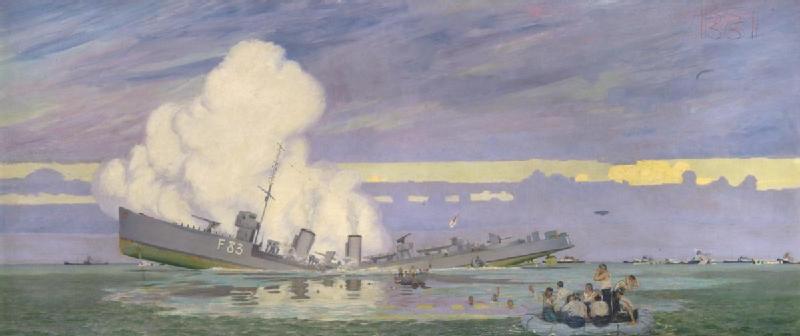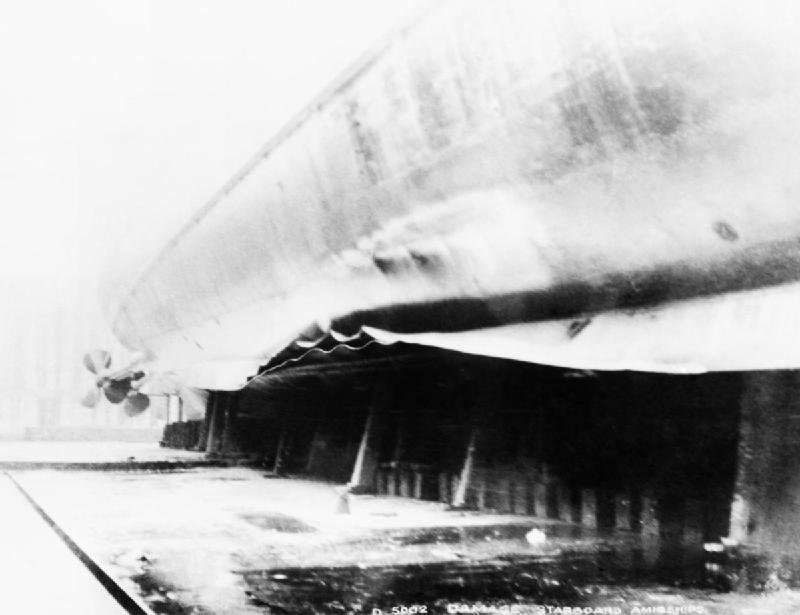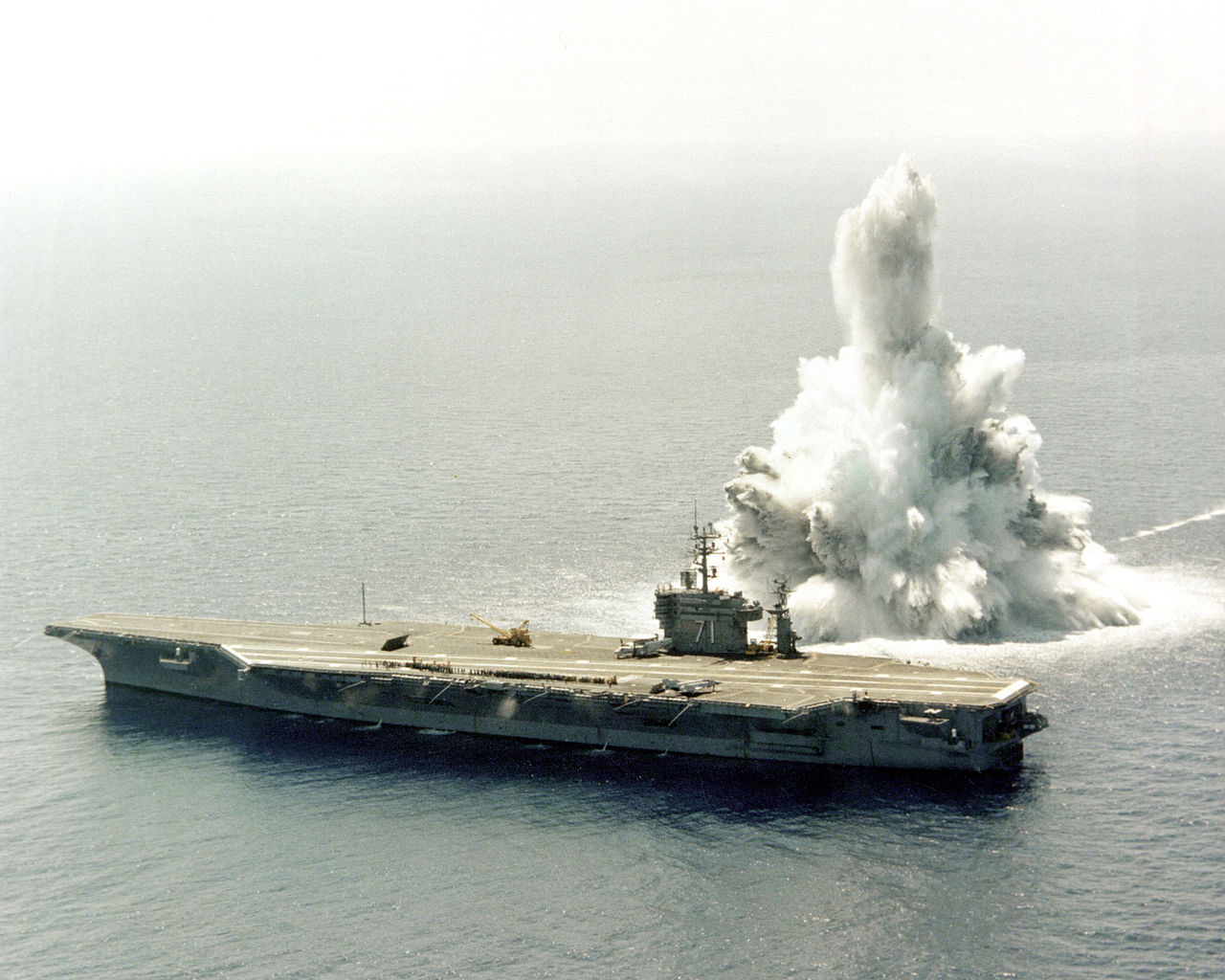Improvements in underwater protection after World War I posed a problem for torpedo designers. Torpedo defense systems had reached a point where they could keep a ship operational after at least one and probably several hits. One option would be to increase the amount of explosive in the warhead, but this would take space away from the propulsion system, making the torpedo slower and less effective.1 The alternative was to find some way to bypass the TDS, and designers in all of the major powers quickly realized that a magnetic pistol could set off the torpedo underneath the target ship. These did not always live up to their designer's expectations, with the American version proving particularly notorious, but when they worked, they made the torpedo much more effective.

A destroyer sinking after being torpedoed
The biggest factor was the simple impossibility of protecting the bottom of the ship. While a TDS might be able to provide 10-20' for the explosion to expend its energy before reaching the ship's vitals, providing similar standoff for underbottom explosions would dramatically reduce the volume available for said vitals.2 Instead, a double or triple bottom of 6-8' was standard, intended to protect the ship from grounding, provide extra liquid storage, and give at least a little resistance to attack from below.
A second important effect was that an underbottom explosion was essentially trapped under the hull, and the resulting gas bubble had to go around the ship to be able to vent to the atmosphere.3 Smaller ships are particularly vulnerable. As can be seen in the video,4 the gas bubble first lifts the center of the ship, then collapses, placing tremendous strain on the ship's structure. The ship itself then seals its own doom. As the asymmetrical bubble collapses, the water coming up unopposed from the bottom forms a jet that cuts the ship in half. A battleship was somewhat less likely to suffer such dramatic damage due to its size, but underbottom explosions were still bad news. Besides the immediate damage to the ship's structure, underbottom explosions tended to cause a great deal of shock damage. This could cause structural damage outside the immediate area of effect, destroy brittle machinery foundations, disrupt electrical equipment and break the ankles of the crew.

Damage to the keel of Hugh W. Hadley from a kamikaze's bomb exploding underneath
Other weapons systems, most notably influence mines, detonated at some standoff and produced a slightly different damage profile. Instead of the direct effects of the bubble, the damage was from a combination of the initial shockwave and the ship being thrown bodily upward. The later produced high vertical accelerations, which were extremely dangerous. Damage could also result from whipping, when the explosion sets up a vibration in the structure. Whipping was often the result of an explosion near one end of the ship, and could be catastrophic if the period of the bubble's expansion was one of the natural vibration modes of the ship's structure. The resulting resonance would do extensive damage, and might cause the ship to be declared a Constructive Total Loss5 even if she survived.

The keel of HMS Belfast, kinked up to 4'6" out of true when she was mined
The effects of shock damage were many and varied. Besides the obvious damage to a ship's frames, shock commonly broke delicate electronics, tripped circuit breakers, and jammed turrets. Before WWII, it was common to use cast iron machinery foundations, but these were brittle and often cracked under shock, disabling the machinery. To mitigate this, rubber pads were fitted, and less brittle materials were used. The crews often suffered broken ankles, and a few suffered concussions and even died from being thrown into the overheads. The most prominent non-contact casualty was the British cruiser Belfast, damaged by a magnetic mine in 1939. Repairing her took almost three years, and cost as much as a new cruiser would have.6

Theodore Roosevelt undergoing shock testing
Since the end of WWII, designers have continued to search for ways to mitigate shock damage. Modern warships undergo shock trials before they are put in service, where large explosives are detonated to make sure that the shock protection works. The increasing size of most warships gives some protection, but the increasing reliance on electronic systems means that good detail design is more critical than ever.
1 Making bigger torpedoes was ruled out by the limits on size and weight of existing equipment. ⇑
2 A typical battleship drew 30-35' of water, and the armored deck was maybe 6' above the loaded waterline, giving a maximum protected height of around 40'. A 20' TDS would have reduced this by 50%. ⇑
3 Sources differ on the importance of this effect. Some claim that underbottom explosions do no more damage than an explosion against a similarly-constructed side would, but the lack of a so-called "surface cutoff", the release wave produced when the shockwave meets the air that greatly weakens the shock, makes me suspicious of this claim. ⇑
4 This is of the Australian destroyer escort Torrens being torpedoed by a submarine during a weapons test. The torpedo, a Mk48 Mod 4, had a 650 lb warhead. I cannot vouch for the accuracy of the audio. If the embedded video doesn't work, an alternative version is here. ⇑
5 This is basically the nautical equivalent of a car being totaled. Repair would be economically unfeasible, although what gets classified as a CTL varies a lot depending on the state of the war. A few destroyers sunk at Pearl Harbor were "rebuilt" by having their machinery and weapons shipped back to the West Coast, where new hulls were constructed. In 1945, with the war winding down, ships were written off after much less damage. ⇑
6 This was considered worthwhile because she was the largest and most capable of the British light cruisers, as one of only two built to the full 10,000 tons allowed under the 1930 London Treaty. ⇑

Comments
On bigger torpedoes: I have heard something about the British Helmover 38-inch (!) torpedo, which was supposed to be air-dropped from a Lancaster and then remotely-controlled from either the launching aircraft or another one, possibly a Mosquito. It would run just below the surface with a snorkel providing air to its Rolls-Royce Meteor internal combustion engine, then as it approached the target would submerge and switch to compressed air. The designer, Air Commodore William Helmore, patented aspects of it- from the patent (US2413350A, Air intake pipe for motor watercraft):
Picture here
I think it ran into various practical difficulties with remotely controlling a torpedo from the air, such as being difficult to see and vulnerability of the controlling aircraft to fighters.
I have a book on British air-to-ground weapons, and I'll have to take a look, because I've never heard of that. I'm not really sure what the point was, but the British did lots of weird stuff during the war. Some of it even worked.
The image link AlphaGamma posted belongs to this blog which has this post about a few utterly ridiculous British weapons. I found the Johnny Walker mine particularly amusing.
I already knew about the Johnnie Walker from the book I mentioned. At some point, I plan to talk about it and the other bizarre weapons that were developed to try to sink Tirpitz. It's not even the weirdest, although the margins are pretty small.
Since I've been poor about commenting at least occasionally, I wanted to say that the video of that weapons test is probably the coolest thing I've seen this week.